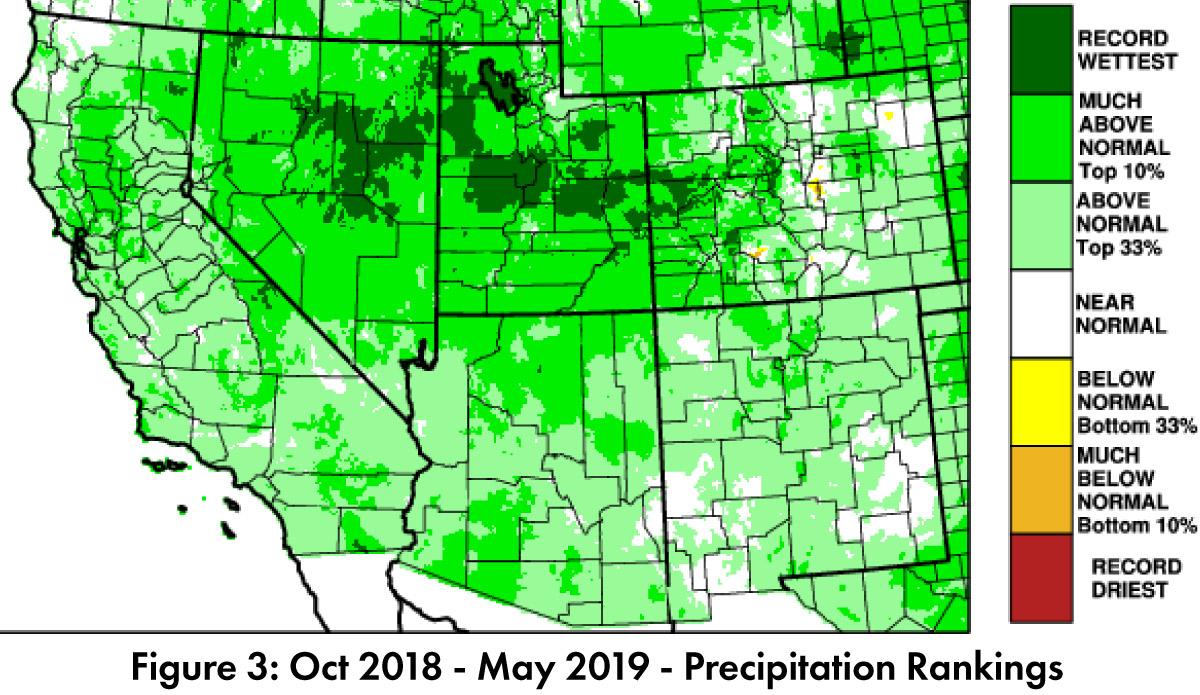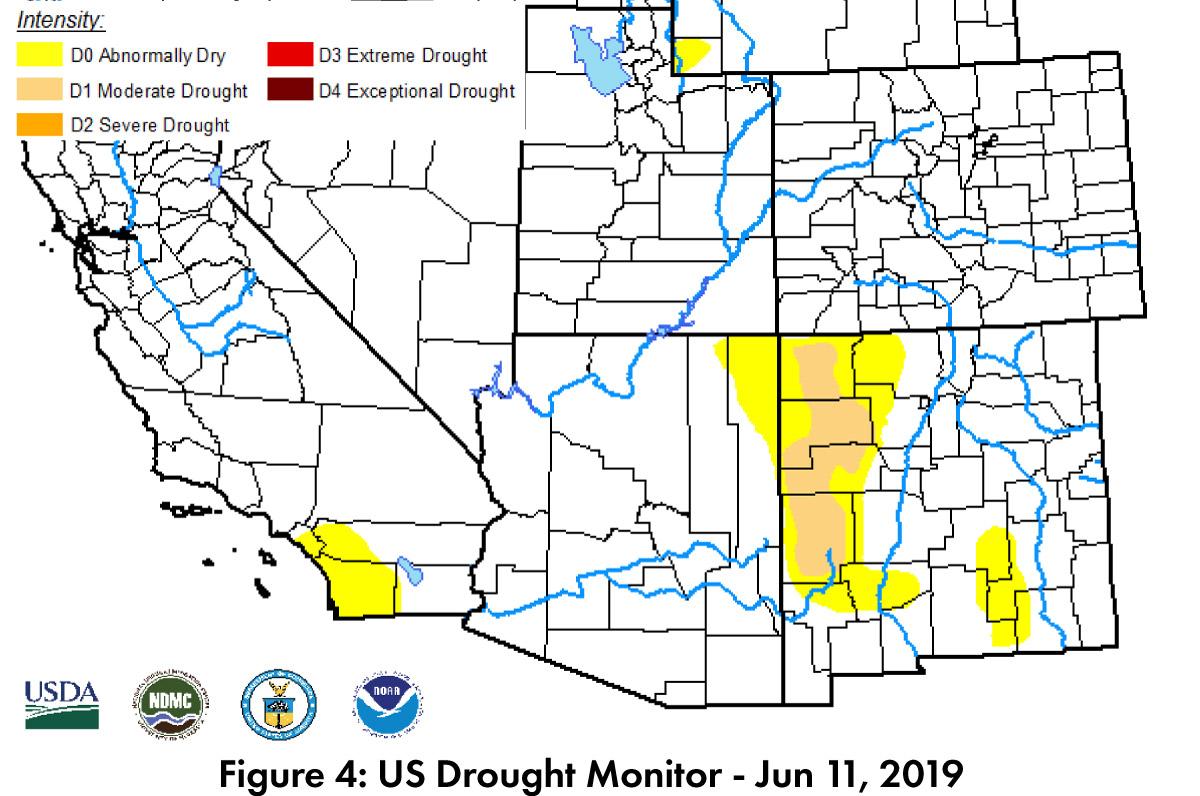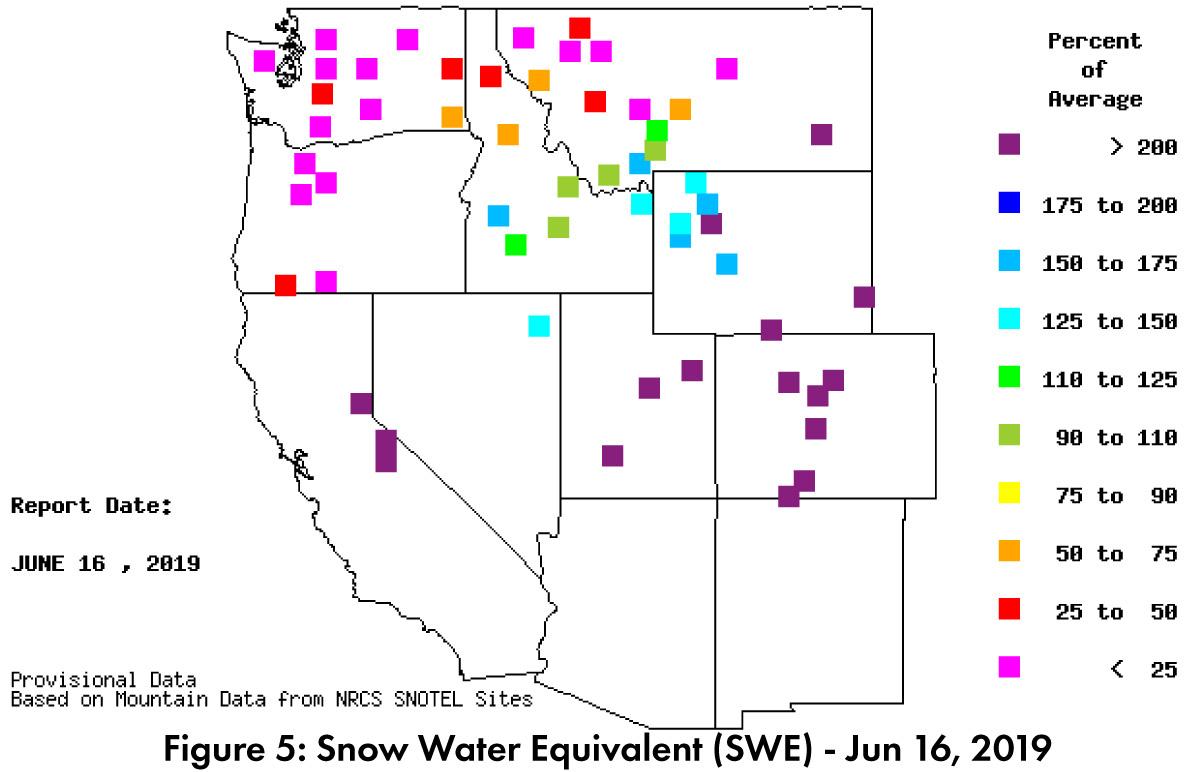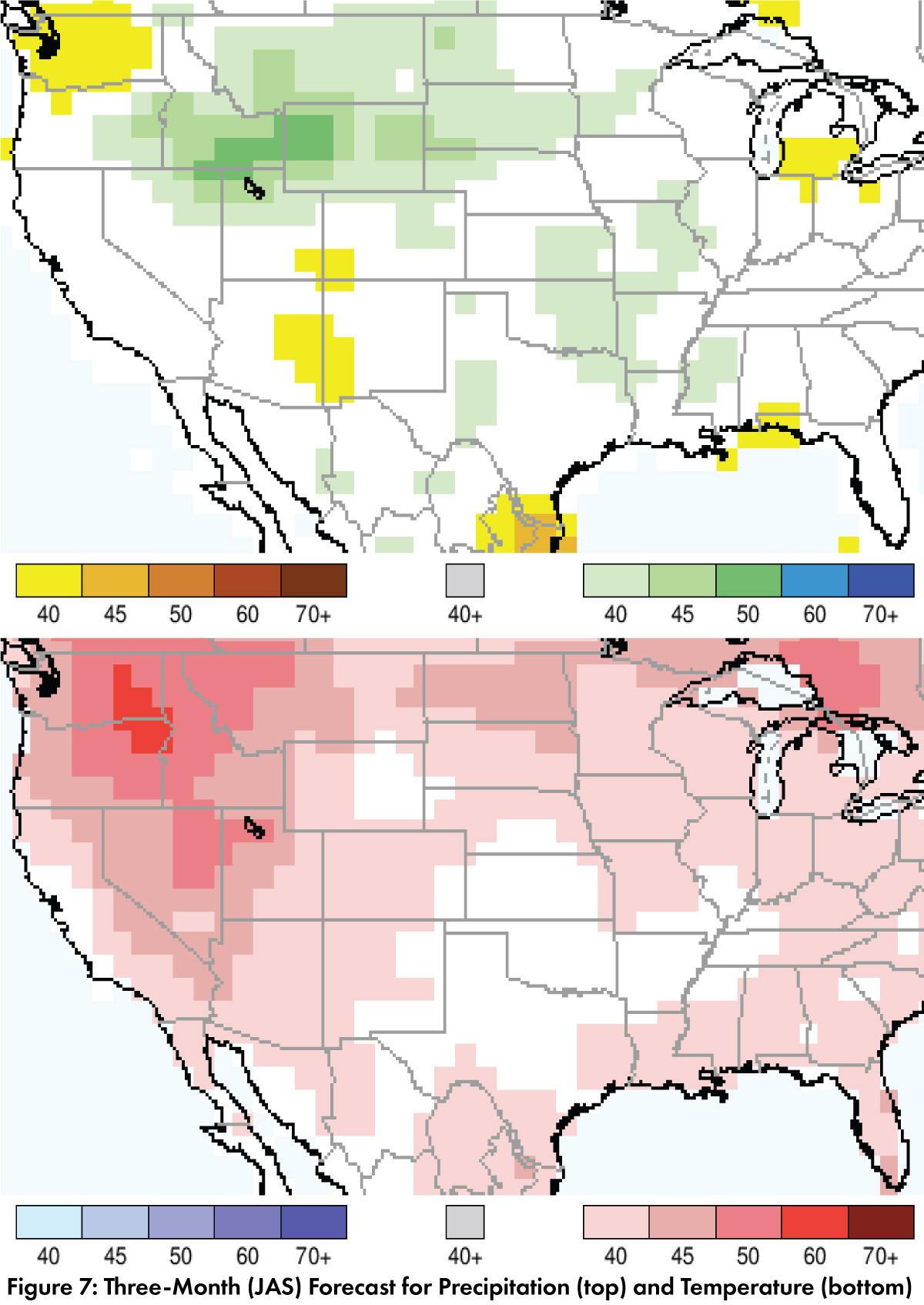Southwest Climate Outlook June 2019 - Climate Summary
May Precipitation and Temperature: May precipitation was mostly above average to record wettest in Arizona, and New Mexico ranged from below average to much above average but most of the state was average or above-average (Fig. 1a). May temperatures were below average or much below average across most of the Southwest (Fig. 1b).
Seasonal Precipitation and Temperature: Spring precipitation (Mar-Apr-May) was average to above average across most of Arizona and New Mexico (Fig 2a). Temperatures for the same period were mostly average in Arizona and mostly average to above average in New Mexico (Fig. 2b).
Drought: Water year precipitation highlights the wet conditions since Oct. 1, which have led to above normal (top 33%) for a vast majority of the Southwest, along with much above normal (top 10%) and smaller pockets of record wettest in Utah, Nevada, and Colorado (Fig. 3). The Jun. 11 U.S. Drought Monitor (USDM) continues to show improvements in regional drought conditions in the Southwest with Arizona nearly clear of drought designations, and the intensity of drought characterizations in the four corners region and northern New Mexico further reduced compared to last month (Fig. 4).
Snowpack & Water Supply: Late season snowpack and snow water equivalent (SWE) measurements are all but absent in Arizona and New Mexico this time of year, while upper elevation areas in Utah and Colorado that feed into reservoirs are mostly over 200-percent of average (Fig. 5; see Snow Water Equivalent recap along with Arizona and New Mexico Reservoirs).
Wildfire, Health, and Safety: May weather conditions (including wetter than average precipitation, mild temperatures, and elevated relative humidity), helped tamp down fire risk in May and into June. Wildfire outlooks for July identify above normal fire risk in lower elevation regions (Fig. 6), linked to widespread fine fuel growth driven by above-average precipitation across the cool season.
El Niño Tracker: Atmospheric and oceanic conditions remain in line with a weak El Niño, and most forecasts call for this event to last at least through summer, and possibly longer (see El Niño tracker for more details).
Precipitation and Temperature Forecast: The three-month outlook for July through September calls for increased chances of below-normal precipitation in eastern Arizona, western New Mexico, and the four corners region, with equal chances of above- or below-normal precipitation in much of the rest of Arizona, New Mexico, west Texas, and northern Mexico (Fig. 7, top). The three-month outlook calls for increased chances of above-normal temperatures in Arizona, and parts of northern New Mexico and northern Mexico (Fig. 7, bottom).
Online Resources
- Figures 1-2 - National Centers for Environmental Information - ncei.noaa.gov
- Figure 3, 5 - Western Regional Climate Center - wrcc.dri.edu
- Figure 4 - U.S. Drought Monitor - droughtmonitor.unl.edu
- Figure 6 - National Interagency Fire Center - droughtmonitor.unl.edu
- Figure 7 - International Research Institute for Climate and Society - iri.columbia.edu








